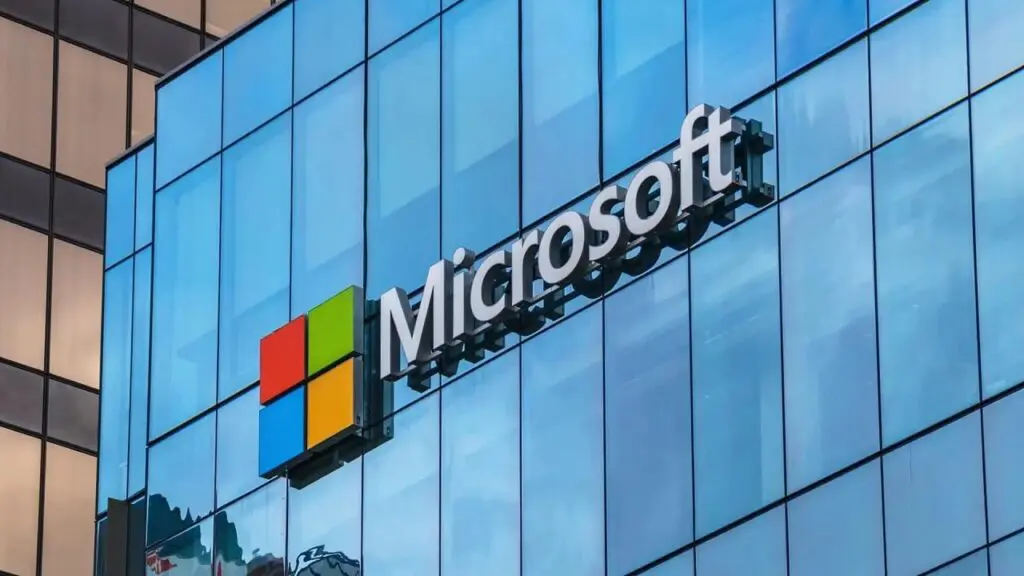Microsoft Net Worth: Trillion-Dollar Journey and Growth Strategies

Quick Answer 🔍
Microsoft has a Net Worth of $3 Trillion.Ever wondered how Microsoft grew from a startup to a $3 trillion tech giant?
It’s not just about software anymore;
it’s a story of strategic innovation and diversification.
From pioneering in personal computing to leading the cloud revolution with Azure, Microsoft has consistently stayed ahead of the curve, adapting to changes and seizing new opportunities.
In this article, we will look into Microsoft’s rise, its key revenue streams, and how it continues to shape our digital future.
Coming Up Next
Microsoft Over the Years

From its inception in the 1970s by founders Paul Allen and Bill Gates, Microsoft’s ascension from a billion to a trillion-dollar market valuation epitomizes its sustained triumph within the tech realm.
Initially launching as a pioneering software firm, it has methodically broadened its array of products and global footprint, solidifying its status as a technological behemoth.
By February 23, 2024, Microsoft had achieved a staggering market capitalization of $3.05 trillion, reflecting an impressive annual growth of 52.09%.
Such an expansion is a clear indication of Microsoft’s robust financial health and its unwavering dominance in the technology industry.”
Microsoft’s Revenue Streams
Microsoft, one of the world’s leading technology companies, generates revenue from various sources, reflecting its diverse portfolio. A detailed examination reveals three primary sources driving its revenue: cloud services, productivity software, and personal computing.
Cloud Services
Microsoft’s cloud services, including Azure, play a pivotal role in its revenue generation.
As businesses increasingly migrate to cloud computing for scalability and efficiency, Microsoft has capitalized on this trend.
Azure’s robust infrastructure and suite of services have attracted a large customer base, contributing significantly to Microsoft’s overall revenue.
Productivity Software
Microsoft’s productivity software suite, which includes products like Office 365 and Microsoft Teams, remains a cornerstone of its revenue strategy.
With the proliferation of remote work and digital collaboration, demand for these tools has surged.
Microsoft’s continual innovation and integration of new features have reinforced its position as a leader in the productivity software market, driving revenue growth.
Personal Computing
Despite the shift towards cloud-based services, Microsoft’s computing segment remains a substantial revenue driver.
Products such as Windows operating systems, Surface devices, and gaming consoles contribute significantly to its bottom line.
Microsoft’s strategic focus on gaming, particularly with the Xbox platform, has also been a lucrative revenue stream.
Microsoft Annual Revenue (2019-2023)
| Year | Revenue (in billions USD) | YOY Growth (%) |
| 2019 | $125.8 | – |
| 2020 | $143.0 | 13.65 |
| 2021 | $168.1 | 17.54 |
| 2022 | $202.0 | 20.21 |
| 2023 | $218.310 | 8.08 |
Microsoft’s revenue streams reflect its adaptability to evolving market trends and its ability to innovate across various sectors of the technology industry. The company’s consistent revenue growth underscores its resilience and strategic prowess in navigating the ever-changing business landscape.
But how did they do it?
Consistency is key. Microsoft didn’t just stumble upon success.
It climbed its way up at a steady compound annual growth rate of 9.30%. Picture climbing a ladder, where each rung represents billions of dollars.
This journey from a billion-dollar company to a trillion-dollar behemoth isn’t just numbers.
It tells a story of innovation, persistence, and how Microsoft has become indispensable in our digital lives.
Microsoft’s financial performance is a testament to its enduring relevance and innovation in the tech industry.
It’s not just about being a giant in the market; it’s about continuously pushing boundaries and setting new benchmarks.
Net Income and Profitability Analysis
In 2023, Microsoft reported a notable net income of $77.096 billion, highlighting its ability to generate substantial profits amidst a challenging global economic landscape.
This achievement underscores Microsoft’s operational efficiency and strategic investments, which have played a pivotal role in enhancing its profitability.
Operational efficiency at Microsoft is evident in its streamlined processes and cost-effective management of resources.
The company’s focus on cloud computing, particularly Azure, has been a significant driver of revenue growth.
Microsoft Cloud’s quarterly revenue of $30.3 billion, up 21% year-over-year, illustrates the robust demand for cloud services and Microsoft’s ability to capitalize on this trend.
Strategic investments in AI, cybersecurity, and other emerging technologies have also contributed to Microsoft’s profitability.
These investments not only bolster Microsoft’s product offerings but also attract a diverse customer base, from individual consumers to large enterprises, further solidifying its market position.
With total assets standing at $411.976 billion in 2023, Microsoft demonstrates strong financial stability and resilience.
This substantial asset base supports Microsoft’s operations, research and development efforts, and strategic investments, ensuring its competitive edge in the technology sector.
Shareholder equity is a critical aspect of Microsoft’s financial health, reflecting the company’s efficient management of assets and liabilities.
A strong balance sheet, characterized by high shareholder equity, indicates Microsoft’s ability to fund future growth initiatives, withstand economic downturns, and return value to shareholders through dividends and stock buybacks.
Microsoft’s Evolution and Strategic Acquisitions
Since its founding, Microsoft has evolved from a software provider for personal computers to a global technology leader.
This transformation has been driven by innovation, strategic acquisitions, and a forward-looking approach.
The acquisitions of LinkedIn and GitHub are prime examples of Microsoft’s strategy to diversify its portfolio and enhance its offerings.
LinkedIn expanded Microsoft’s presence in the professional networking space, while GitHub reinforced its commitment to the developer community.
These acquisitions have been integral to Microsoft’s growth strategy, contributing to its expansive ecosystem and reinforcing its position in the technology sector.
Microsoft Subsidiaries
Below is an overview of some of the more notable and influential subsidiaries that have been integral to Microsoft’s expansion and success across various domains:
1. LinkedIn – A professional networking platform acquired by Microsoft in 2016, enabling connections between professionals and offering various career-related services.
2. GitHub– Acquired in 2018, GitHub is a platform for software development and version control using Git, offering the distributed version control and source code management functionality of Git, plus its features.
3. Mojang Studios – The Swedish game developer known for creating the popular game Minecraft was acquired by Microsoft in 2014.
4. Zenimax Media – In 2021, Microsoft completed the acquisition of ZeniMax Media, the parent company of Bethesda Softworks, a major game publisher known for franchises like The Elder Scrolls, Fallout, Doom, and more.
5. Skype Technologies – Acquired in 2011, Skype offers voice and video call services, instant messaging, and file-sharing capabilities.
6. Nokia’s Devices and Services Division – Acquired in 2014, this division was responsible for mobile phones and smart devices; Microsoft has since divested from the mobile phone business.
7. Rare Ltd – A British video game developer acquired in 2002, known for titles like Banjo-Kazooie, Sea of Thieves, and Perfect Dark.
8. aQuantive – Acquired in 2007, this digital marketing service and technology company helped Microsoft expand its advertising services.
9. Visio Corporation – Acquired in 2000, Visio specializes in diagramming and vector graphics software.
10. Yammer – Acquired in 2012, Yammer is a social networking service for communication within organizations.
11. Dynamics 365 – Not an acquisition, but a brand of business applications that has grown through development and acquisitions, encompassing CRM and ERP solutions.
12. PlayFab – Acquired in 2018, PlayFab offers a complete backend platform for live games and development.
13. Xamarin – Acquired in 2016, Xamarin is a company that offers tools for building mobile apps using the C# programming language.
14. Compulsion Games – A video game developer known for titles like We Happy Few, acquired as part of Microsoft’s initiative to expand its gaming content.
15. Undead Labs – A game development studio specializing in zombie survival games, acquired by Microsoft.
16. Obsidian Entertainment – A developer known for role-playing games, became a part of Microsoft in 2018.
17. InXile Entertainment – Specializing in role-playing games, inXile was acquired by Microsoft alongside Obsidian.
Microsoft’s subsidiaries play a crucial role in its global operations and strategic expansion.
These subsidiaries, spanning various sectors such as gaming (Xbox), professional networking (LinkedIn), and software development (GitHub), allow Microsoft to tap into diverse markets and customer segments.
Through these subsidiaries, Microsoft not only broadens its product and service offerings but also leverages synergies within its ecosystem to drive innovation and growth.
Product Innovation and Market Impact
Let’s talk about Microsoft’s innovation and how they’re doing some pretty cool stuff these days.
First up, there’s Azure, which is like a massive online space where businesses can store their data and run their apps.
It’s growing super fast because more and more companies want to use the cloud to make their work easier and smarter.
Microsoft is leading the way here, making sure Azure is top-notch with the entire latest tech.
Then, there’s Microsoft Office, which I bet you’ve used before.
It’s not just about Word or Excel anymore; it’s all about Office 365, which lets people work together online from anywhere.
It’s super popular and keeps bringing in the money for Microsoft because; let’s face it, we all need to write documents or crunch numbers sometimes.
Now, about those Surface devices—those sleek tablets and laptops from Microsoft—they’re facing a bit of a tough time.
Sales have dropped a bit, which happens in the tech world, especially when lots of other companies are making cool gadgets too.
But, Microsoft isn’t just about selling devices; it’s about the whole experience of using their software on nice hardware, so they’re still an important part of the picture.
Microsoft is doing well because they’re smart about focusing on the cloud and making sure we’ve all got the tools we need to work together, even when we’re apart.
Even though selling gadgets is a bit harder these days, they’ve got plenty of other things going for them.
They’re not just sitting around; they’re always coming up with new ideas and making sure they stay ahead in the tech game.
Pretty impressive, right?
Conclusion
Microsoft is in a solid financial position with a strong market presence, thanks to its diverse portfolio.
Looking ahead, things seem bright for Microsoft. They’re investing in areas with huge growth potential, like cloud computing, artificial intelligence, and more.
The company is well-positioned to capitalize on future tech trends, making it an interesting entity for investors, tech enthusiasts, and users alike.
In essence, Microsoft is worth keeping an eye on as it pushes the boundaries of technology.
Whether you’re involved in tech or just use it daily, Microsoft’s evolving strategies and products are likely to impact the industry significantly in the coming years.




GIPHY App Key not set. Please check settings